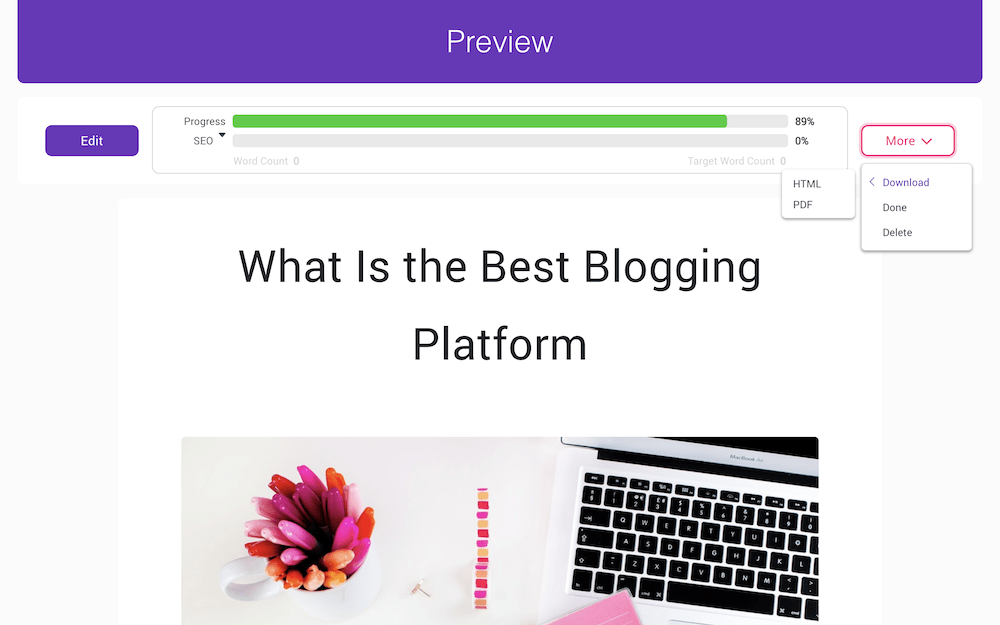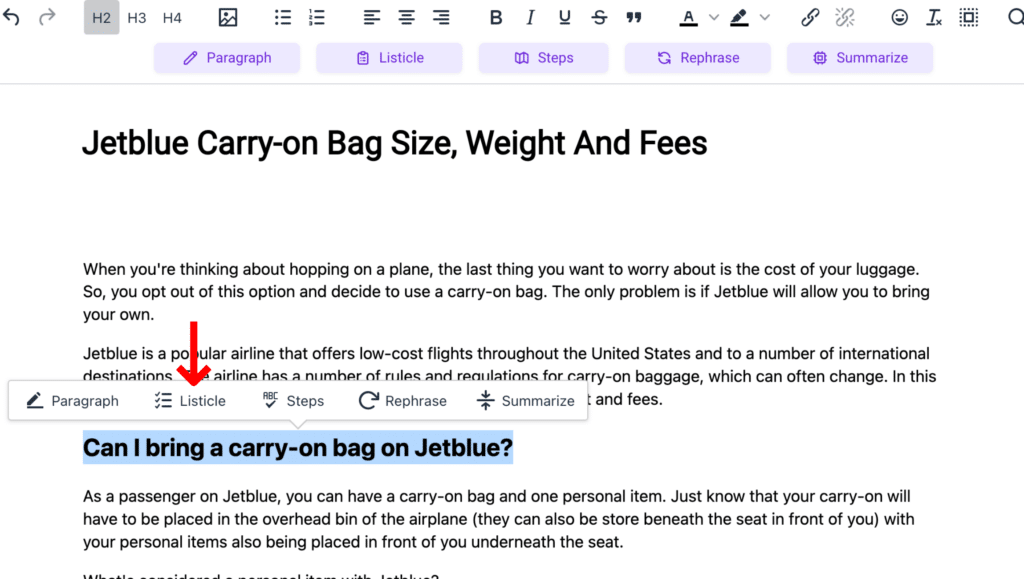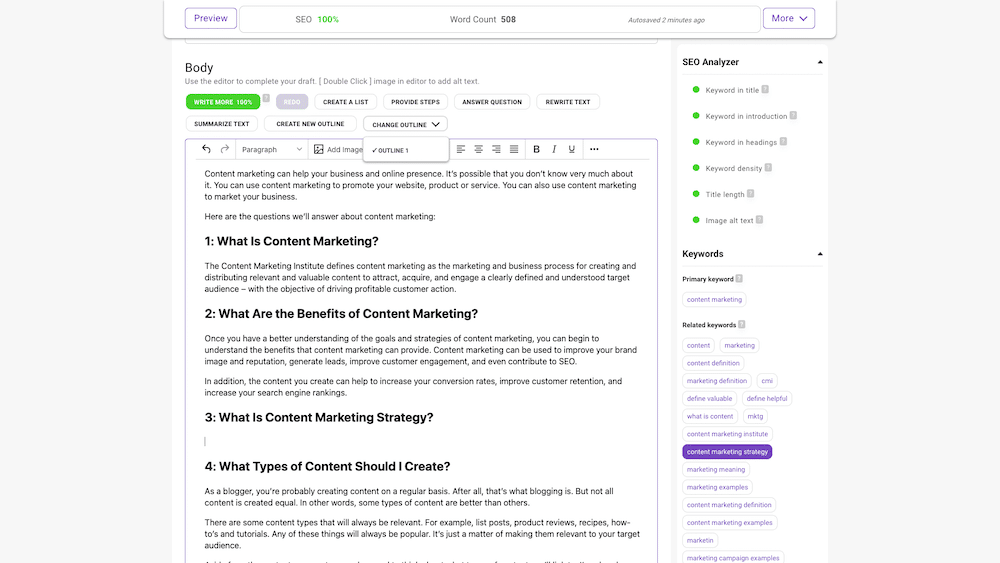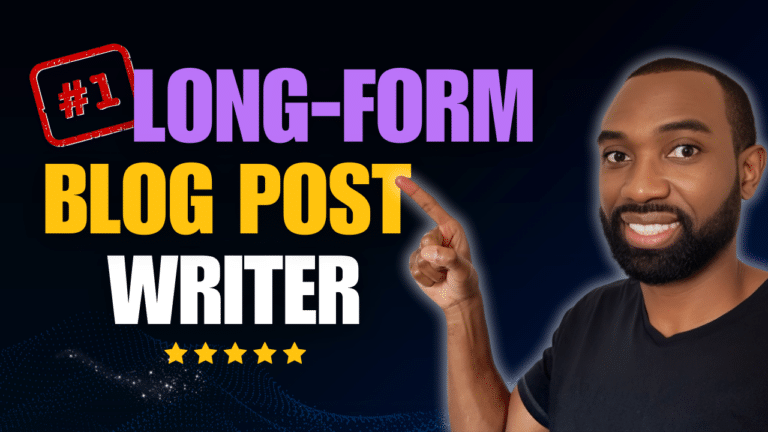🔥 FLASH SALE: Blog to Video is HERE! Plus Analytics AI & Chat Builder. Only 50 licenses left at $179 👉 Claim Your Lifetime Deal!
Headings and Subheadings: Use the Right Formatting to Grab Attention on Your Blog

When writing a paper or a blog post, you have to have a plan. You have to know what you want to get across and how you’ll get it across and this is where headings and subheadings come into play.
Headings help break up your blog post and any other writings into separate ideas. Whereas the subheadings bring more details and facts about the subject which I will go into more details later.
If you were to look at a graph with many dots, the graph would be hard to read, and you wouldn’t get the point of the graph. So you would need lines to connect the dots, and that’s just what makes headings and subheadings work.
This is what makes your headings and subheadings for your writing project.
Today we’ll go over:
- What are headings and subheadings?
- Why do we need them?
- Should your headings and subheadings be in APA (American Psychological Association) format?
- How to use headings and subheadings in your blog posts?
Let’s dive in and make sense of everything you need to know about the world of Headings and Subheadings.
What are Headings?
Headings are the first level of your writing masterpiece. They introduce a topic of a paragraph. The purpose of a heading is to let readers know where they are in your document or blog post. They can also include keywords that relate to the topic.

A heading can be a few words or a sentence, and they are usually written where each letter of the sentence starts with a capital letter or title case.
Why are Headings Important?
Headings help people who are scanning a document to get an overview of what the document covers.
The heading is an essential part of a document because it tells the reader what to expect from the rest of the document.
Without a heading, the reader would have no idea where they are in the document or what information to scan for. Therefore, headings are crucial in a long-form article.

With the advent of the internet and so much information readily available to everybody, it has become essential to offer readers the information that requires the least effort to find precisely the information they need.
Article headings provide a convenient way for them to locate further information.
What are Subheadings?
Subheadings are the second level of a document. They introduce a topic of a paragraph. The purpose of a subheading is to break up longer sections into smaller, more manageable pieces. Think of it as a “bullet-point” under your heading.
A subheading is a heading usually introduced by a tag or a few words that explain what the paragraph covers.

Subheadings are typically used in long-form documents. The primary purpose is to provide further detail in the main heading in a crystallized form that is easily identifiable.
It is usually very specific, slightly more detailed information on a particular aspect of the primary heading. In addition, the subheadings provide further, more focused facts relevant to the main subject.
Create SEO-Optimized Blog Posts with First Draft PRO in Minutes!
👋 Say Goodbye to Endless Hours of Research and Writing
What is the Purpose of Headings and Subheadings?
Subheadings and headings serve several purposes. First, they help break up a long document into smaller sections. So, they define the content of each section more clearly for the reader.
Secondly, they allow the reader to quickly scan text which is easy to identify due to the different physical format of the heading, which facilitates the speedy location of specific information.
What Does APA Stand For?
APA is an abbreviation for the American Psychological Association, a well-known organization that produces writing style guidelines for academia, especially in social sciences. According to The American Psychological Association:
Many writers use the APA style in different disciplines around the world for concise, powerful, and persuasive scholarly communication.
🔍 Find Keywords That Actually Drive Traffic
Stop guessing and start ranking. Discover high-value keywords, analyze trends, and dominate your niche free and fast.
What are the advantages of using Heading and Subheading APA styles?
The primary advantage of using APA styles is that it is widely used in most American universities and online publications. So, if you are writing a paper for school or any major publication, the chances are that you will be required you to adopt the APA styles.
Why do we format our writing in this style?
APA styles ensure uniformity for academic and purposes no matter where you submit your writing to be reviewed. This makes it easier for everyone familiar with the styles to write and read documents – especially more complex or long-form topics.
What About Citations? (Where Do I Put Them in My Article)
On the subject of add your references to your article, you can follow the guide of APA. The citation of references and rules outlining the crediting of other’s works also helps to recognize other people’s work, so it is not seen as your own when it is not (preventing plagiarism).

You can add your citations throughout the body of your text at the end of a heading section or if you’re writing a blog post, you can add it to a particular keyword and link out to the referring article.
Giving credit to other authorities and citing them has the advantage of adding credibility to your work. It shows that you have researched the topic and considered other writers’ opinions and points of view before presenting your own.
How to write APA headings and subheadings?
APA headings are formatted in either lowercase, uppercase, or title case. The usage of the title case is exclusive to the first letter of the heading/subheading only.
- After the introduction, use a Level 1 heading for the following main section of the paper.
- Use Level 2 headings for subsections of Level 1 headings, level 3 headings for subsections of level 2 headings, etc.
- Do not label headings with numbers or letters.
- All topics of equal importance should have the same level of heading.
How Do I Use Headings and Subheadings in Blogging?
So, what do you do with Headers when it comes to blogging? Some people find headings and subheadings helpful when they blog.

This is especially true for beginners in writing, who may not know how to organize and present their ideas in a logical and straightforward format. Generally, there is a:
- TITLE for the blog in the form of an H1 Header: You can ONLY have one H1 Header for your blog post and this is given to the title
- This is followed by up to 4 subheadings (H2, H3, and H4): These subheadings at used to delve deeper into certain aspects of the headings directly above them in case readers want additional information on the specific element of the topic. You’ll also use variations of your keywords in the subheadings
You can think of the blog post headers as the Roman Numeral Outline that you would get in school.

If you aren’t using the Bramework blog builder, here are the core components of your blog outline:
- Main Header/Title (H1)
- First Topic/Keyword (H2)
- Challenge or Question about First Topic (H3)
- Second Topic/Keyword (H2)
- Challenge or Question about First Topic (H3)
- Solutions (H2)
- Conclusion (H2)
Why are Headings and Subheadings Important for Your Blog Post?
Using this writing style in blogging can assist your readers in finding the information they are looking for as quickly as possible. If readers cannot find the information quickly and easily, they move on to other blogs to find the information.

APA styles, in my opinion, are not required in the genre of blogging as the APA styles can come across as too formal and rule-bound for most readers and writers in the blogging space.

Most clients who request blogs insist that the structure and content are presented in an informal, almost conversational manner. Easy-to-read and easy-to-find seems to be the thinking behind most blog content.
However, you MUST use the headers (H2, H3, H4) in a similar way to not only improve the reader’s experience, but to also improve your chances of ranking for a particular keyword.
Wrapping Up…
Headings and subheadings are crucial to your scholastic essay or your online blog post. They help the reader navigate through your work. The headers also help break up the text and make it easier to understand your overall message.

Both headings and subheadings provide the overall structure of the document and are crucial for online articles and blogs.
Academic and university papers require APA styling, which is the standard adopted in the United States and many other countries.
Writing for the internet is much less formal. However, adding this simple application to your website articles will improve the reader experience and keep them coming back to your blog for more informative content.
Happy writing!
(Original Article Date: February 9, 2022/Updated by Nikida Metellus on April 13, 2022)
🎓 Join the Ultimate Blog Ranking Academy!
Unlock the Secrets to a $10,000 per-month Blogging Income




